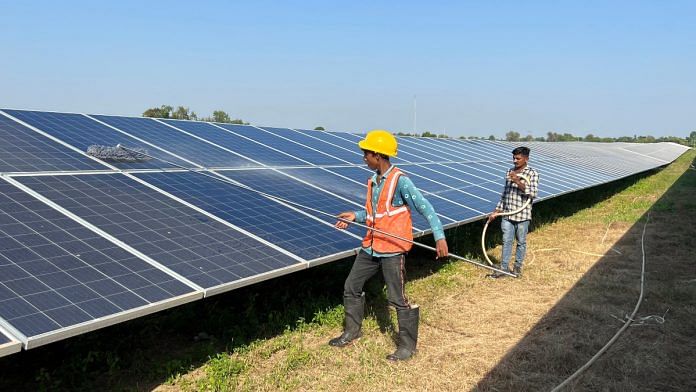As the world confronts the realities of climate change and energy insecurity, solar energy presents itself not merely as a technological solution but as a transformative geopolitical and developmental strategy. The International Solar Alliance is uniquely positioned to catalyse this transformation. But to succeed, it must go beyond declarations. It must now design and implement financial architectures capable of supporting its ambitions.
The potential of solar energy is undeniable. It is modular, scalable, and increasingly cost-effective. Yet, for the nations most abundant in sunlight, finance remains a key constraint. The International Energy Agency estimates that clean energy investments in emerging economies must rise from $770 billion in 2022 to over $2.2 trillion annually by 2030. A significant portion of this must be allocated to solar energy. However, the fiscal realities of many countries—either still recovering from the Covid-19 pandemic, burdened by debt, or struggling to cope with pressing social needs—limit the ability of governments to invest at scale.
India’s experience illustrates this well. Despite policy successes in solar deployment, the government’s ability to directly invest in grid infrastructure or generation assets is capped by fiscal deficit targets and debt ceilings. Even green bonds, while helpful, are bound by ring-fenced rules and are limited in scale. Public financing, therefore, can only act as a catalytic lever—it cannot be the backbone.
Turning to the private sector, we find both potential and limitations. Many solar developers operate on highly leveraged balance sheets, and with rising global interest rates, the space for fresh capital is narrowing. Moreover, risks such as currency volatility, regulatory uncertainty, and weak transmission infrastructure dampen investor appetite, especially in frontier markets. Private capital is crucial but requires structured entry points, credible exit mechanisms, and active risk mitigation to be effective.
Making solar power viable
One promising solution lies in Infrastructure Investment Trusts (InvITs). These allow mature infrastructure assets—such as operational solar plants or transmission lines—to be monetised and sold to institutional investors, freeing up capital for developers to reinvest in new projects. India has already demonstrated the utility of InvITs in sectors such as roads and power transmission. Extending this to the solar power arena could unlock significant value. The ISA should take the lead in crafting a common InvIT framework tailored for solar infrastructure. A pooled anchor investment fund, supported by multilateral finance institutions, could reduce risks and attract scale investors across member countries.
Equally vital is grid infrastructure—the invisible scaffolding that makes solar power viable. The sun may shine everywhere, but power must travel, be stored, and be balanced in real-time. India’s Green Energy Corridor and the Revamped Distribution Sector Scheme offer early models. Yet, many ISA member states lack integrated plans for transmission, storage, and cross-border trading.
And then there is global capital. Today’s capital markets are flush with liquidity, seeking long-duration, climate-aligned assets. But this window may not last. As rates rise and climate risks mount, capital will flow only to those who present credible regulatory frameworks, transparent asset registries, and scalable instruments. The ISA should champion a Global Solar Asset Registry for standardised project information. It must also establish a Solar Credit Guarantee mechanism to mitigate political and currency risks. And it must establish a blended finance facility to crowd in private investment using concessional capital.
Also read:
New strategies are key
The rise of India’s solar power capacity—from under 3 GW in 2014 to 100 GW today—demonstrates what the right mix of policy, institutional coherence, and financial innovation can achieve. However, to transition to 500 GW by 2030, new strategies are essential, including rooftop and distribution company (DISCOM)- level solar investments, urban InvITs, and the integration of solar energy into agriculture through active implementation of schemes such as the PM-KUSUM (Pradhan Mantri Kisan Urja Suraksha evam Utthaan Mahabhiyan). These experiences must be adapted and scaled across ISA countries.
ISA’s evolving strategy must rest on three core principles. First is to scale with purpose. Solar expansion must reduce energy poverty and build domestic value chains. The second is to finance with innovation. ISA must mobilise capital markets and create new instruments, such as InvITs. The third is to lead with solidarity. Emerging economies must shape the agenda with shared standards and cooperative execution.
The sun unites us—geographically, climatically, symbolically. However, to truly harness its power, we must act together, think boldly, and manage our finances wisely. The International Solar Alliance must now transform from a coalition of commitments into a platform of execution. It is time to light not only the grids but also the lives of those still waiting for their first connection.
The author is a former finance secretary to the Government of India and chairman, Institute of Development Studies Jaipur. Views are personal.
(Edited by Zoya Bhatti)






